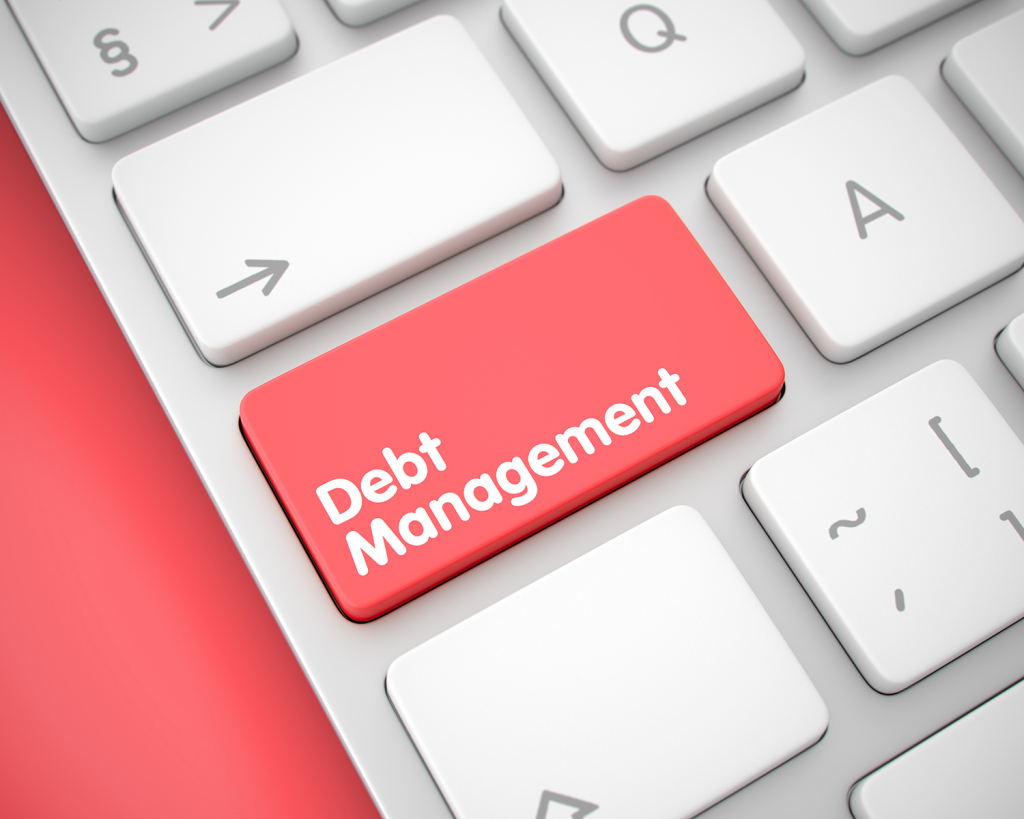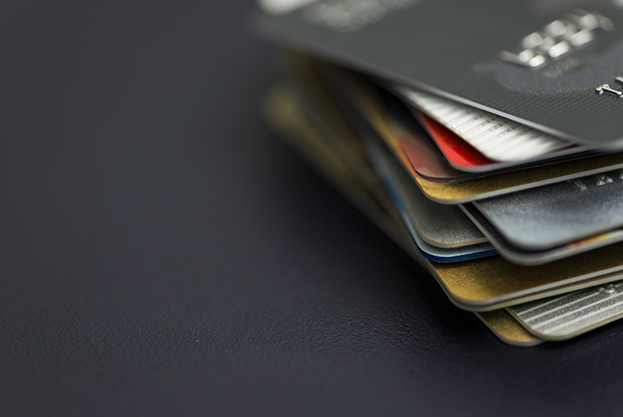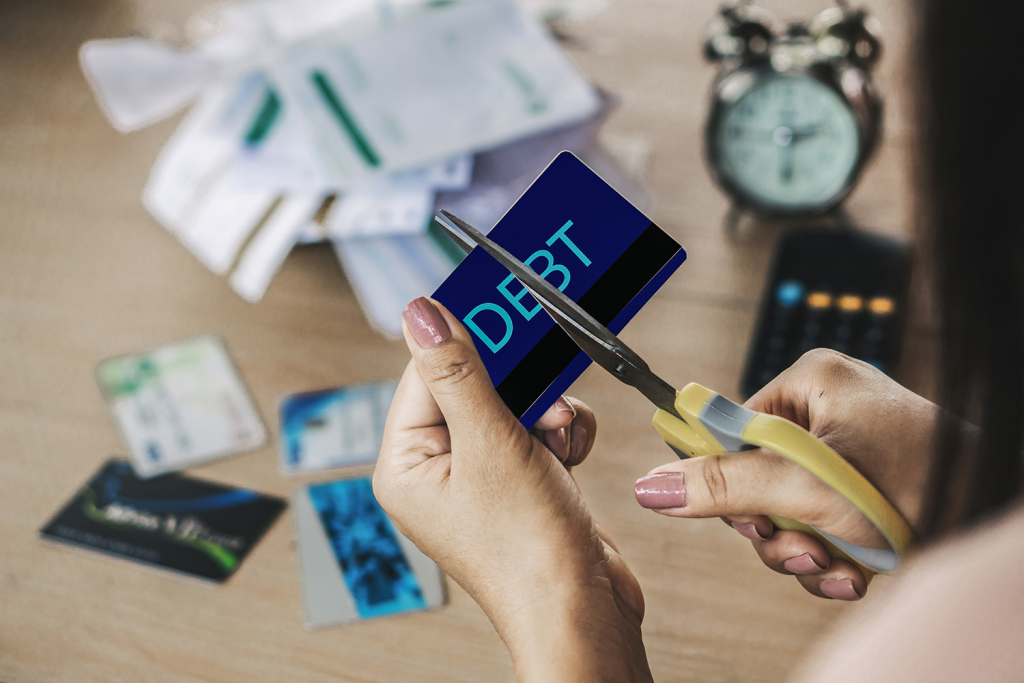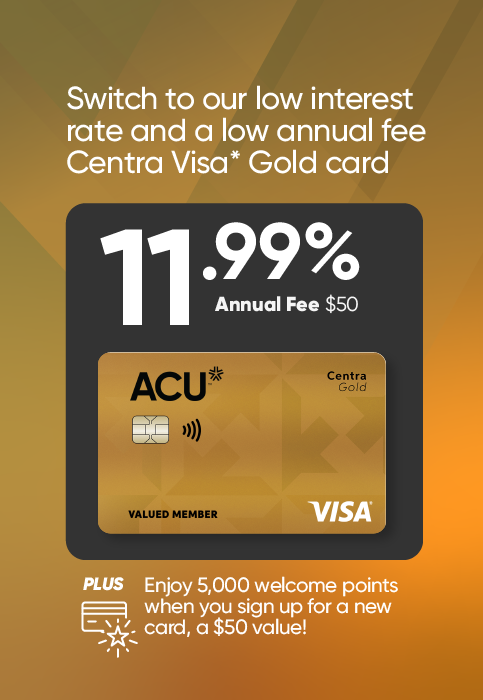Five strategies to tackle your credit card debt
For many Canadians, credit cards are a convenient way to shop for everything from household goods to travel or gas. But with the cost of living on the rise, paying for essential goods or emergency expenses with credit has become a necessity for some families. The result can be a balance and interest payments that make it difficult to pay off credit card debt.

This year, many Manitoba and Saskatchewan residents reported feeling financially stretched, with 30% saying they don’t make enough to cover their bills and debt payments. Just under half said they are $200 or less away from being unable to meet their financial obligations at the end of the month.
Nationally, Canadians’ reliance on credit cards has increased—Equifax reported that credit card balances topped $100 billion for the first time ever last December.
Feeling the pressure

Maricel Dimaunahan, Financial Account Manager at ACU’s Jefferson Branch, has noticed an increase in members dependency on their credit cards.
“Inflation is a big factor. The majority of debt we’re seeing right now is really because of credit cards. And credit card companies have also raised their interest rates,” she explains.
Finding a way to take control of your credit card debt is a key step to achieving financial well-being.
Here are five strategies to start paying off credit cards and relieve the stress of rising balances:
1. Pay more than the minimum
Each month you carry a credit card balance, your statement will list the minimum amount you’ll need to repay. Usually, it’s $10 plus interest and fees, or 3% of your balance, whichever is greater. While making the minimum payment will avoid late fees and non-payments on your credit report, it will cost you more and take longer to pay off.

For example, if your card has a balance of $5,000 and an interest rate of 20%, making only your 3% minimum payment will bring your total cost of borrowing—the amount of your balance plus all the interest—to $10,860, more than double your original balance. It will take you over 18 years to pay it off, assuming you make no other purchases on that card.
By contrast, even paying twice your minimum (6%) cuts that total cost of borrowing to $6,872—an interest savings of almost $4,000—and shaves 11 years off the timeframe.
“I always encourage people to pay more than the minimum so interest doesn’t accrue,” Maricel advises, because any payment you can make over and above the minimum will pay down your balance faster and save you interest payments long-term.
2. Come up with a plan

Tackling outstanding balances on multiple credit cards is challenging, and there is no such thing as a one-size-fits-all approach to success.
As an advisor, Maricel helps guide members towards a solution that personally motivates them to continue paying down their balance, but also allows them to enjoy their life and work toward their financial goals.
Three approaches to reducing debt on multiple cards:
Debt avalanche method: Pay down the highest interest card first, while continuing minimum payments on the other cards. When the highest interest card is paid off, move on to the card with the second highest rate, until all balances are paid off. This method decreases the amount you’ll pay in interest over time.
Snowball method: Pay off cards with the lowest balances first. When these are paid off, your motivation will “snowball” as you shift focus to cards with larger balances.
Loan consolidation: With this option, you pay off all your credit cards at once using a personal loan. Now you’ll only make one payment against the loan, instead of multiple smaller ones to different credit cards. Personal loans can be secured with a deposit or an asset, have more flexible repayment schedules and generally offer lower interest rates than credit cards.
No matter which approach members take, Maricel encourages them to close credit cards once they are paid off. Holding only one or two cards can help to avoid the temptation of overspending in future.
3. Consider a balance transfer
The higher the interest, the longer it will take to catch up on payments. Transferring your balance to a lower rate card can help.
Often, credit cards will offer a low introductory rate for a set period—which may be just long enough to help you get ahead. For example, ACU’s credit card program offers a no-fee 3.9% interest rate for six months. For instance, if you sign up for a Visa Classic* card, after the introductory period, balances and purchases are subject to the card’s 12.99% fixed rate.

Elizabeth Braz Robb, Manager of Channel and Product at ACU, feels this low-rate card is perfect for people carrying balances on multiple cards. “You only get the introductory rate for six months, but your payments in that time are doing more to decrease your debt. And even after that rate expires, it’s still a good option to consolidate higher interest rate credit card balances.”

Related: How to read your credit card statement (and get rewarded)
4. Crunch the numbers
Not every card works for every situation. As Maricel explains, while a no-fee card might sound like an obvious choice, individuals who carry a balance must closely examine the interest rate. Sometimes, a card with a small annual fee but a lower interest rate may make better financial sense.
For example, ACU’s Centra Visa* Gold card comes with a $50 annual fee, but the card’s interest rate on purchases is 11.99%, much lower than the 20% charged by the average credit card. Plus, members receive 5,000 welcome points—a $50 value—for signing up.
Someone with a $5,000 balance making a $300 monthly payment at 11.99%, even factoring in the $50 annual fee, will save almost $300 in interest and pay down the balance months faster than a no-fee card at 20%.
Maricel consults with members on their financial situation to determine the best option. “If a member needs to carry a balance, but can make regular payments that factor in the annual fee then I encourage them to switch over to a fee card with a lower interest rate.”
In addition to great financial benefits, it’s also possible for your credit card to be aligned with your needs and values. Several ACU cards contain a feature known as accessibility notching to help cardholders experiencing visual impairment locate the correct card and the chip location.
Select ACU cards are also pre-printed on 70% reclaimed recycled plastic, saving the equivalent of one water bottle.
5. Make your card work for you
Today’s credit card rewards can be used for more than just merchandise. With cards that pay out points in cash or credit, cardholders can use rewards to lower their credit card balance, ultimately saving interest.
With ACU’s new Cash Back Visa Infinite* card, for example, the points you earn can be credited back to your ACU chequing or savings account, or applied to your credit card balance.

Ultimately, Maricel believes tackling credit card debt head-on is about creating and sticking to a plan. With the help of an ACU advisor, it’s possible to manage your credit card balance in a way that works with your lifestyle and values—and crush that debt for good.
Interested in learning more about how ACU’s credit cards—including our no-fee balance transfer offer—can help you pay down your debt and lower your interest payments? Visit our website or contact an ACU advisor for more information.
*Trademark of Visa Int., used under license.
Up Next
Sustainability: How ACU is turning words into action
A hand holding a seedling
For ACU, Pride radiates outward
“I’ve always wanted to instill a change in the world for the better,” says Cristina McCourt, Financial Account Manager Trainee and member of the ACU Pride Committee, an employee-led resource…
Royal Aviation Museum travels to its final destination—with ACU’s help
A stone’s throw from the main terminal of Winnipeg Richardson International Airport you’ll find one of Canada’s hidden gems, where the airplanes are a little more exciting than your typical…






